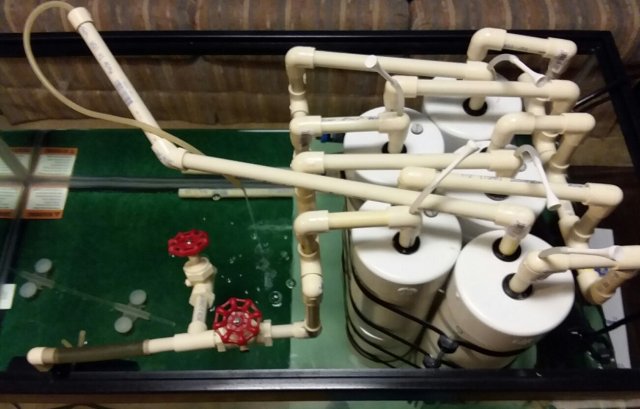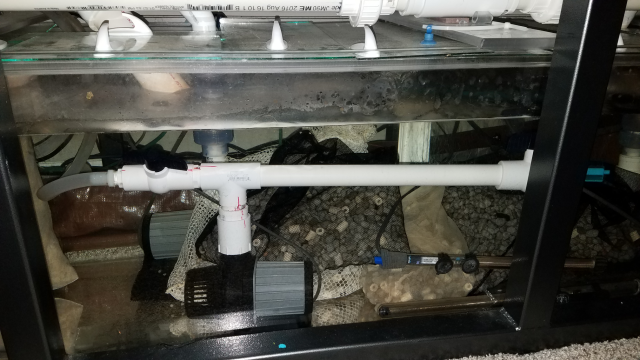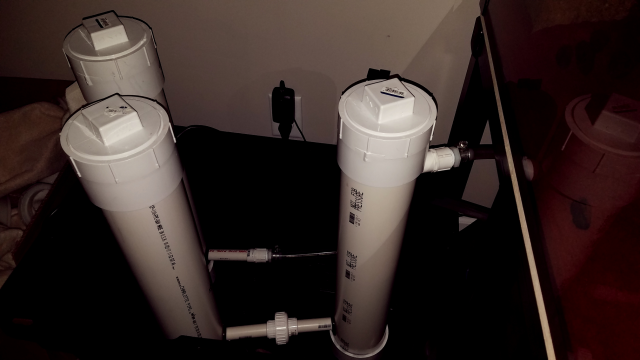Did I ever show you a picture of my denitrator? Four of the towers are in parallel with their outputs going into the 5th tower. The nylon screws on top can be used for bleeding and to verify the flowrates thru the parallel towers are the same. They were originally supposed to be used with tubing for carbon dosing but I forgot the flow thru each tower is from the bottom to the top. So the valves were useless for that and I had to add the airline in the cpvc for dosing which is sealed off with golf tees in the photo.

I've been testing it using very low flowrates. I've used 0.5 - 1 gpH thru each of the 4 parallel towers (this equates to 4 gpH thru the 5th denitrifying tower or 96 gpD).
It also requires a carbon source for bacterial respiration/synthesis. I can't get it to work without carbon. Based on my experiements, it takes 6-8 mg ethanol to remove 50-70 mg/L nitrate/100 Liters.
I haven't tried it with higher flowrates. I'm going to try that next keeping everything else the same and report the results.

I've been testing it using very low flowrates. I've used 0.5 - 1 gpH thru each of the 4 parallel towers (this equates to 4 gpH thru the 5th denitrifying tower or 96 gpD).
It also requires a carbon source for bacterial respiration/synthesis. I can't get it to work without carbon. Based on my experiements, it takes 6-8 mg ethanol to remove 50-70 mg/L nitrate/100 Liters.
I haven't tried it with higher flowrates. I'm going to try that next keeping everything else the same and report the results.








